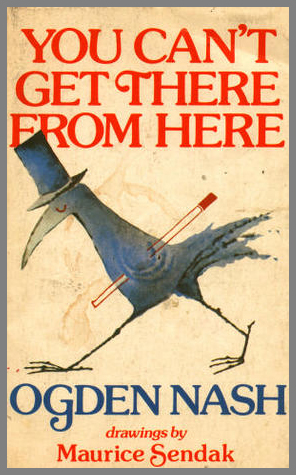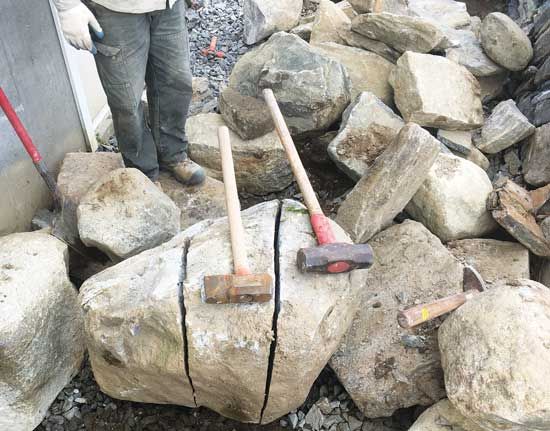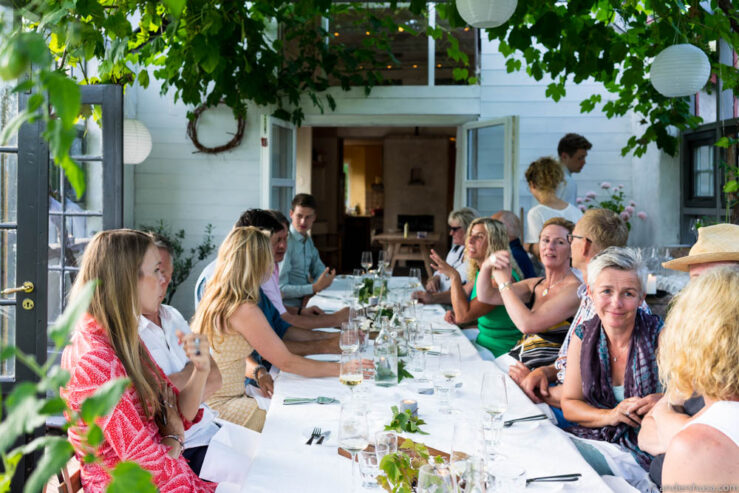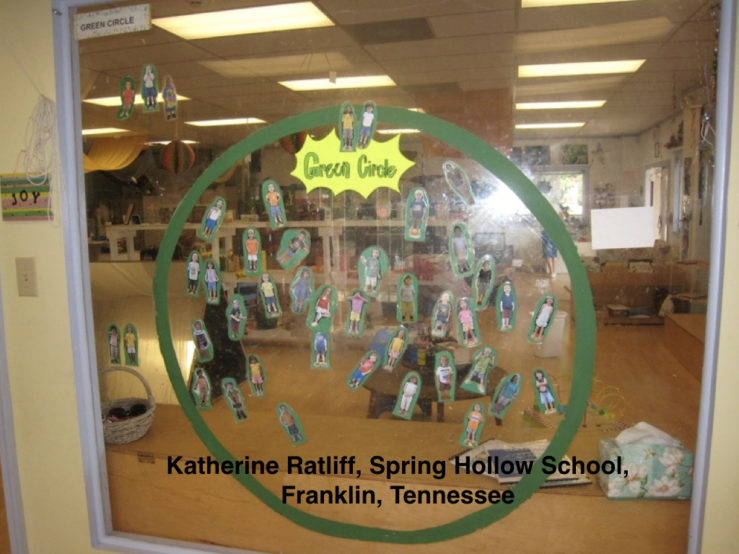A Pedagogy for Ourselves
Education As Experience
It is challenging to create opportunities for children where they get to live life fully to become their unique selves, to care for others, and to belong to a community. It takes time and bravery to attempt to alter the culture of our classrooms to energize participation.
If you were a child again, what would engage you? If you found list of personal challenges that would develop and refine your ability to build a community of joyous, engaged children, would you invest your time and effort? Would you take charge of your own education?
Learning to Create Spaces

Ideally, in a democratic learning community the children are the authors of the life they have at school. They are fully engaged with each other in learning how to become their best selves. A leader of such a community can’t really make that happen. The leader is not the star. The leader designs the sets and offers the stage where a community of children discover themselves by acting together, refining their skills over time and solving together the inevitable problems and errors. If the leaders trust and care for all the actors, their natural kindness and wisdom, believe it or not, emerges and evolves towards wholeness and joy. That’s how the best schools work.
If you really are not the visible one, how do you learn to do that. If you don’t know how to lead in that way, it may seem like you can’t get there from here.
I can’t tell you how to master the challenges listed below in this pedagogy for ourselves, but I can offer what I have learned in my years of teaching young children. It’s organized by the time of day or context in which a leader operates. Sometimes the children are free to do as they wish. Sometimes the leader takes the reins of a large group meeting. Sometimes the children work in small groups that have a purpose. At times the leader and one child interact. When these blocks link together, they become a structure that supports a responsible, inquisitive community.
Practice for Precision
I offer the Aqueduct of Segovia as a metaphor for what we self educators build. This aqueduct was built by the Romans in southern Spain to bring water to the city. Note its strong structure yet with delicate lines and interlocking arches. It carried water for almost 2000 years. The structure enabled a flow that went off to the city’s fountains so life could flourish. The water simply flowed along as if nothing were there—naturally.
A democratic learning community has an interlocking structure, too, that the flow of children may not even notice, but it’s there, standing strong and enduring for the flow of children who are simply living life and go on into the future somewhere and build our society.

Educators are builders crafting the opportunities for the children to grow into relationships of enhancement, for themselves, the others, and the community. The education systems for educating educators rarely address how this kind of classroom is built, probably for a variety of reasons. Workshops and courses usually don’t offer opportunities for practice of the skills it takes to lead such a space, and rarely are students in teacher education courses members of such a learning classroom. If you haven’t experienced it, leading one looks almost impossible.
Pedagogy for Pedagogues
The path here focuses on only one area of learning for children (not motor skills, not art, not mathematics). Here we examine the way a preschool classroom structures children’s social skills, community participation, and agency. Here is an integrated view of the actions and intentions that a leader uses to build a classroom that seems to run itself.
Returning to the metaphor of the stone structure supporting a natural flow, we begin with shaping the stones we place. The rocks and boulders we shape are the lovely people who choose to be with young children as their teachers.
All of them are unique people unlike anyone else on the planet. Some already have many of the dispositions and skills of educators. Some have desire but not much experience, so learning to lead is rough and maybe unpleasant at times. I count myself in the latter group. When I started it was so hard. I felt so helpless and angry at times. Nothing in my life prepared me for those tough children long ago.
I think we all have to be responsible for getting better at what we do. The children matter to us, or we wouldn’t be here.
Prerequisites
It’s true that we can’t get there from here if we haven’t done the work to shift our focus from what is in our head to what is in the children’s head. We have to get rid of the basic bad habits that we acquired from how we were raised. The challenges here in the Pedagogy for Ourselves are advance levels of learning to lead others.
The way we talk to children has to be positive and warm. We have to be highly responsive to them, expecting children lead us rather than the other way. We have to be informative and stop being bossy; we have to eliminate habits of telling others what to do.
And we have to become observant. We have to be able to watch and learn. The children are our teachers.
In my experience people have to do the work of observing their own habits, counting the number of directions, marking down each no or don’t that pops out of their mouth, etc. To change our habits we have to be able to see them, see how pervasive they are, and take steps to practice better kinds of habits. I assume some people can change without counting or writing things down, but I know it is lots faster if we take data. We have to see the reality of habitual mistakes in our brains and practice the better ways to be.
Enterprise Talk
I believe effectiveness educating others depends on doing the work described on Enterprise Talk. It took me four years to learn to talk that way to children, but I didn’t know very much either at the time. My students at North Seattle College learned it faster: three months of data gathering and six months of practice.
Connecting to Children
The roughing out the stones for the arches is the work of Connecting to Children.

Four self-run Modules clarify and sharpen the base for influencing children: being positive, being playful, being informative, and
being attentive to the dispositions for learning,
Connecting to Children is a year-long, cooperative opportunity that at least a thousand people have completed and found vital to their effectiveness. Those are the D Level Performances that demonstrate both understanding and ability to use foundational skills, like getting that hunk of rock in shape to make its contribution.
NOTE: From this point onward, the technical work of learning to lead offered here is a portion of the unpublished C Level Performances.
The C Level addresses the activities one learns to lead, the competencies related to early childhood curriculum. The B Level addresses researching one’s effectiveness, matching goals with results. The A Level addresses leading a wider community. Together they are Performances for Early Childhood Teachers, PerFECT, which remains unpublished.
Building Social Relationships and Community
This content of a pedagogy for pedagogues addresses the metaphorical aqueduct supporting the personal and social abilities children acquire by age seven.
Four Leadership Contexts
This work focuses on refining our actions in those major touchpoints of influence, the times we interact with children where we practice precision. For many people it takes two to five years to become relaxed and present in each of the four social contexts. Each has a precise purpose.
The aim here is to…
- Independent (free time) — allow the community to live community life, solve its problems, create its synergy, and discover itself.
- Large group (everybody) — demonstrate, provide information, and lead group activities.
- Small group (two to six) — create opportunities to examine, investigate, and discuss a common referent.
- Individual (one to one) — listen and flow into deep relationships.
The contexts…
- Independent time — free play with others (indoor area play, outdoor free play, workstations time)
- Small group time — adult with three to six children (project work, studio work, small group activities with consistent membership, meal times relating to children who happen to be nearby)
- Large group time — adult leads a gathering of the entire class (opening time, planning time, community meeting time, rendezvous time, music and dance time, outdoor games, closing time)
- Individual time — the adult and one principle child interact (greeting time, one-on-one listening, assertive care, supportive care, saying goodbye)
Leadership Precision
When I know what I am doing in any of those times, it’s because I have made so many mistakes and been so out of touch with myself. I am “out of touch” when I am nervous and unsure. I am “in touch” when I can see the children’s eyes and feel my feet in my shoes. This is in the “being with” time when the children are present. There is also the “before/after” part, the preparation and reflection efforts that I have to learn in order to make it all work. I want to share what took me about 18 years to learn in the one content area of building healthy social relationships and positive self regard—key goals for all children to acquire before age seven.
A note about my use of the imperative voice. Throughout this site I try to avoid telling others what to do. The list below appears to violate this rule. However, this page, because it is intended as a reminder to myself, uses directive statements. I have no problem bossing myself around. Please don’t think that in these phrasings I am bossing you.
Independent Time
Freedom
Allow children the freedom to make mistakes in constructing their identity and the identity of others. Establish the expectations that this is specifically the time they have to be who they are and do what they do today. You can tell them that, too. This is free play, a time for you all to encounter problems and mess-ups in a safe, caring space with the other children doing the same thing.
Avoid the natural tendency to rescue or advise. Usually it’s best to wait for them to deal. The community grows it’s altruism and care optimally fast. Often one or two may naturally move toward social problems. Build from there. Let them struggle with whatever is tough. That’s what school is for. They have to choose to be in action for others. Today is simply what happens today. Tomorrow will always be different. We are looking down the road the children cannot yet see. In four months or a year they will come to understand a deeply satisfying joy that arises from participation. We care who they become by their seventh birthday, so relax right now and document the journey. Nobody learns when it is easy.
Minimal Rules
Set clear, consistent expectations. The agreements about what is appropriate are clear ahead of time and committed to by everyone. When you talk state agreements positively, as goals, what we all strive to do. When the children talk they usually phrase things negatively using “no” and don’t.” Agreements are best changed in a community meeting, which means I can wait until later, or I could call a meeting right now, sit down, review what happened, and help them work it out. Of course, this changes independent time to group time, which means things are no longer free: I control the agenda and they do the work.
Trust
Trust that the children are capable and competent and therefore, if allowed, can fix their own mistakes. All of them. This means if there are problems, we all get to learn something important now. If the problem isn’t resolved right away, I can take a picture of the scene or write some notes about specifics of this problem to bring it up later to the community at large group time. If one meeting doesn’t work, it means we have deep learning ahead of us. I can wait a bit and bring it up again. Sometimes we all need time to process things. Teacher Tom has a story to tell.
Model
Be a model of how people ought to behave for that’s where my true power lies. The way I act represents an ideal for children to aspire to. I have to always be courteous, calm, loving, gentle, compassionate, and caring and not let things get to me. Look at their eyes. Feel my feet. My relationships with everyone are the most powerful force I have for fostering healthy peer relationships.
Inform
Be present as yourself, the greatest gift you have for children. Talk about yourself. Talk about the social interactions you are seeing. Inform the children of the names, the actions, and the descriptors for whatever they are working on together, using the most complex vocabulary and syntax you can muster.
Respond Warmly to What I Value
Always be on the lookout for nascent goodness, the tiny emergence of what I deeply value.It’s easy to see what is wrong or needs correcting. It’s at the beginning, when a social competence first emerges, that I need to catch. “That is called being courteous.” Sprinkle descriptions, the vocabulary we call these things—not praise. “Seeing what others need is being compassionate.” Water the seedlings; tend the garden.
Open the Gap
Avoid stepping in with my power. Wait before pushing. Put a cork in it. Keep bossy in check. Rephrase questions into “I wonder…” Never praise (“good job” “I like the way”), since it offers little incentive for inventiveness, usually destroys a sense of independence and freedom, and directly implies they should seek my approval. No need to even talk: use non-verbal positive communication and vocal sounds which don’t distract or intrude in their lives.
Clarify Clean-up
Make clean up and restoration a group goal.
- If skills are necessary for cleaning (like how to sweep, wash a table, or clean a glue bottle) show everyone at large group time, not at independent time.
- Cue the start of restoration with a signal (like a bell, not words).
- Attend to the 80% children who take initiative (rather than the 20% who are not engaged)

- Stay informative (talk about what is remaining or where things go).
- Celebrate accomplishment at the very end when everything is fully restored and ready for the next encounter (“Are we amazing?” “Yes!”
- Post a document like one of these to remind all adults to inform and attend to Clean-up Goals
Child-generated Activities
Build a creative, industrious, and inventive classroom. Activities have to be engaging, offering provocations exactly in the Zone of Proximal Development. Subscribe to Teacher Tom’s Blog, do the work necessary to learn The Project Approach.
The Humanities
Watch for the opportunity to offer the fourth level of The Learning Frame, where the children might be interested in representing what they have done or accomplished in one of the many forms of representation in art, writing, and drama, etc., to first re-think it and then present it to others. Offer time and materials for drawing the blocks just built, offer to scribe (take dictation) of their thoughts from the dramatic play that just occurred, or put on music and dance the bubbles. Offer ways to record experience in another language or re-presenting one language with another. [Extend it beyond independent time by taking it to the next level, Beneficence, by bringing it to group time to discuss a way to share those representations with peers, another class, a visitor, or with parents.]
Extensions
Add unique, open-ended materials for unstructured explorations, alter the conditions in a way that surprises, or tools or materials to what is happening that the children might turn to when they are working together.
Document
Spend the time capturing what happens and convert it into a form that communicates to others. Recordings and notes guide one’s growth and offer the children a shared understanding of what they do, what others do, and what the community does together.
Challenges
- Can I trust that the children will naturally find something engaging, so I can watch and document? Creating documentation is a priority for my time.
- Can I let the children test and manage their relationships in their own ways?
- Can I really give them the time to work on both their play and their problems?
Small Group Time
Routine Small Group Activities
Offer routine group activities to build friendships and communication abilities. Picture storybooks, natural progression activity, transformation, walkabout, or project work. See Small Group Activities. I have had children who had a hard time establishing any relationship with any child. When I assigned this child and his or her most likely partner to the same small group and they shared together these many activities, it worked. It’s the best thing I know to do.
Mealtime Protocol
Create consistent, community-building, relaxed mealtime protocols. Determine the ideal setting for sharing food, the arrangement of the tables to maximize pleasure and aesthetics, the tradition for opening the experience, the routines that focus attention on sharing food with courtesy and politeness, the content of what is most desirable to talk about together appropriately, a closing routine, and how the cleanup work is done when in community.

Consider what a social dinner party can be. The host plans where people are seated so they can relate to the person to the left, to the right, and across the table. The table is exquisite and the lights are low. Something is said at the beginning; something is said or done at the end. Conversations are about what the other person is doing in their life. Courtesies to others, such as passing to the right, offering to others, and asking, “Could I…?” or May I…?”
Pati Meyer at Pike Market Child Care had a noon meal that routinely lasted around 30 minutes. The overhead lights were off. The children helped prepare the setting with a tablecloth, battery candles, and usually flowers, ready for the food delivery cart from the kitchen. Food presented in bowls family style passed around the table to the right, counter clockwise, for orderly expectations. After everyone was ready the meal could start. She offered a gentle poem or talked about the importance of this community and this calm time to be together, just us. All of the children stayed until all were finished, not because they had to, but because the table with others was the most fun place to be. They could do their own cleanup but returned to the table to be with the others. She was a model of conversational interest, often beginning with some interesting self-disclosure or a true tale from her life.
Quaker Introduction:
All present join hands in a circle around the table, and are silent for half a minute or so as they collect their thoughts, meditate or pray. Then one person gently squeezes the hands of the people seated adjacent; this signal is quickly passed around the table and people then begin to eat and talk.
Quote Introduction: Shakespeare:
Good company, good food, good welcome, can make good people.
Helen Hearn:
We are grateful for this food. It restores our strength. It heals our bodies. It fuels our brains.
We are grateful for this time, to renew our spirit, to share our trials, to find new strength.
Yo. Ho. Ho.
Traditional Japanese:
itadakimasu (いただきます)grateful awareness of the receiving
- Can I envision a community of young children participating together in a shared excitement of being together communicating with others in comfort and belonging?
- Can I find a way to get routine small group time included in the children’s day?
- Can I make at least one meal a day as a social dinner party with a prescribed protocol?
Large Group Time
Co-active Songs and Dance
Music and movement provide a unique opportunity for connection that is fully engaging and profoundly centered in our humanity and connection with others.
Carl Orff and Gunild Keetman created a teaching approach where music and movement—to speak, sing, and play; to listen and understand; to move and create—can be a essential part of life at a school. When these are brought together in an aesthetic of experience children explode with confidence and presence, often for the very first time in public. Activities involve partner and small group work and include the creative, spontaneous contributions of children, creative movement as well as folk dances, singing, and musical games.
Not until Orff Schülwerk, has their been “a music exclusively for children that could be played sung and danced by them, but that could also in a similar way be invented by them—a world of their own.” (Carl Orff: The Schülwerk: Documentation (Schott, 1978) III, p. 212.) This approach for me, is the finest in pedagogy, beyond any other I have encountered, where the natural beauty of humans living in community can thrive in joy of immediacy and connection.
Stories of Altruism
Read or tell Community Books that create the power of myth, envisioning through story the importance of an ethic of interdependence and care. Stories have characters who are inclusive and make contributions to each other or to the group; characters cooperate, negotiate, or act altruistically. The characters aid or support each other in pursuit of a common purpose. Voluntary, generous consideration of others which is of a helpful nature; problems are solved by characters coming to terms through discussions in which a generous consideration of others prevails, as well as acceptance of each person as a valued member of the whole.
Stories of Deep Emotions
Emotion Books re-create experiences of emotion to discuss and process together. These books provide a direct experience of feeling an emotion or reliving an experience that is shared by most of the children in a classroom. The story is presented from a child’s perspective, not detached, adult-filtered, or moralizing. Vocabulary of emotions is essential. With words one can process emotional experiences with others. See Emotion Vocabulary page and wall chart. Vocabulary can also be introduced with How Are You Peeling?, a humorous illustrations using fruits and vegetables.
Enact stories fairy tales, such as Three Billy Goats Gruff, where traumatic events are encountered. Teacher Tom writes about The Three Little Pigs.
Enacting Children’s Own Stories
Read and enact the children’s own stories as Vivian Paley has so clearly demonstrated. Here is one resource at Storytiming.
Step-Chart Activities
Some children have had little experience with tools or skills they might need to actualize their intentions, such as scissors, double-sided tape, paper clips, sewing, folding, wrapping, etc. Step-Chart activities combine a large group demonstration of the steps in making useful, adult-determined products that challenge children’s use of tools. The children watch as a group then do as they wish in free time. Show everyone how to sew pasta wheels on a paper, how to glue wooden cutoffs, make a helicopter out of paper, or how to cut out a mask. In independent time, let them go at it freely and rely upon each other figure it out—no adult help other than pointing at the step chart. In a subsequent group time review what happened.
Problem Solving Discussions
Lead social problem-solving discussions. Re-enact problem situations that have occurred in the group, elicit children’s suggestions, and let the children decide what to do or, if nothing, then come back to the problem later. One way to open discussions of social problems is The Green Circle, developed by Kate Ratliff in her Spring Hollow School.
 Small photographic representations of all the children are displayed with a large green circle. When anyone doesn’t feel included in the community, they may move their image outside of the circle, which informs the group of an issue that needs addressing.
Small photographic representations of all the children are displayed with a large green circle. When anyone doesn’t feel included in the community, they may move their image outside of the circle, which informs the group of an issue that needs addressing.
Celebrate Accomplishments
Whenever something newly important emerges, the community acknowledges it.
Challenges
- Can I acquire a library of the essential literature of a democratic learning community?
- Can I gather the emotional literature that presents the emotional dark side of life?
- Can I make music and dance stimulate and celebrate spontaneous, joyous group participation?
Individual Time
Inform children of alternatives. After a time is allowed for the child to use the strategies that come to mind offer alternatives, the more options the better: “you could say…, or you could do…” “another idea is to…” I challenge myself to think of 6 options, which takes a long time sometimes. Usually the children think of something I have not thought of.
Actively listen in times of strong emotion. Emotions are an opportunity for closeness: describe what you see, without using emotion words, paraphrase the message you hear the child say, without using emotion words, offer names for feelings, without using the words angry, mad or sad, and finally review the situation. See Leadership and Care.
Assertively step in to offer an agenda for negotiating disputes. Two choices are available: the first is to remove the item until the children on their own agree on how to proceed; the second is to offer a discussion agenda for problem solving: [1] children identify the problem, [2] children offer ideas, [3] children decide what to try, [4] children carry it out. If it does not work, the agenda is repeated.
Offer the incoming child what they most need right away, a hug, food, linkup with another child, time together.
Offer the outgoing child eye contact, unconditional positive regard, a comment about a topic of interest to the child, the family member, and oneself when all are together.
Challenges
- Can I be with children at times of deep emotion, listening without judgment, and valuing emotion as an opportunity for closeness?
- Can I avoid discounting or denying how they feel?
- Can I stay in supportive mode, offering resources or alternatives, so they remain responsible for finding or choosing what to do?
- Can I avoid giving my advice or sharing my opinions?
- Can I imagine how my own life would have been different if I had had someone treat me with loving kindness when I was young?
Can I Stay Diligent?
- Offer truly free independent play time — for extended, unhurried time — without much adult interference or coaching. A time to make mistakes and fix them in concert with others. A time when peers can empathize and help rather than adults. A time for adults to document emergence and reflect on what could extend relationship opportunities.
- Make large group times joyous and compassionate. If you want to influence the community, this is the time.
- Provide mediated relationship opportunities in regular small group meetings where interdependence, participation, reciprocity, and belonging are valued.
- Be a facilitator, listener, or guide, as necessary, at key times, eye-to-eye, with unconditional love, trust, and authenticity.